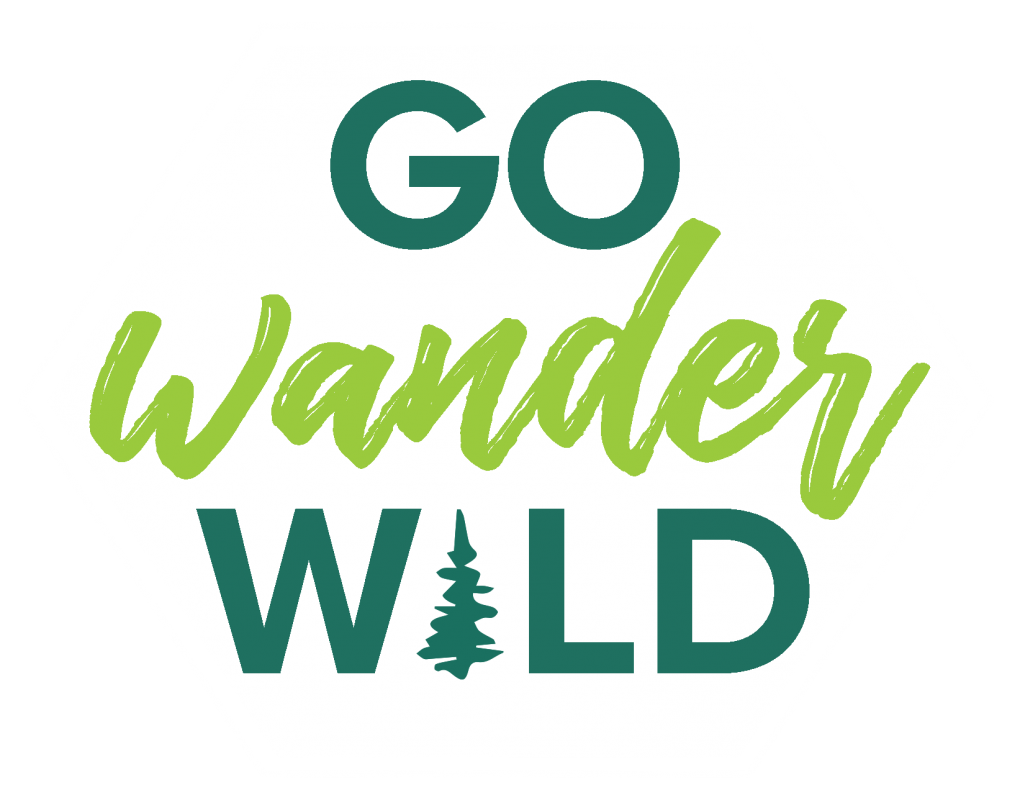Wild camping is free, adventurous, and lets you disconnect and get off the beaten path. The trade-off is that it requires some research and planning. In this guide, we define wild camping and offer tips to make it epic, plus tell you how to find free camping in the US.
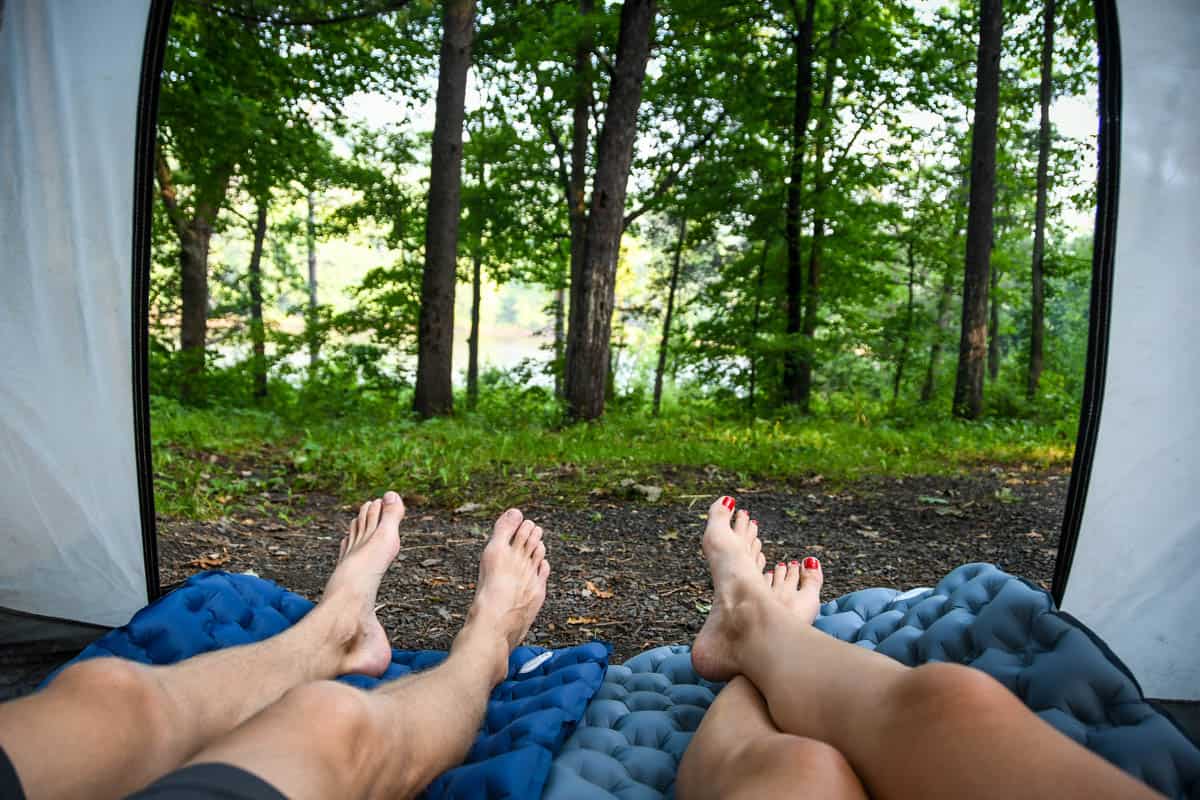
When you go wild camping, you don’t have to camp right next to anyone else or worry about spending a small fortune on campsite fees. There are no reservations and no crowds, but there is a whole lot of open space, peace and quiet, and usually—if you’re lucky—some pretty incredible scenery.
Sounds amazing, right? Almost too good to be true? There is a catch in that wild camping requires a fair amount of advanced research and you often have to get pretty far off the beaten path. For those who genuinely love camping, though, the trade-off is well worth it.
In this guide, we’ll go over the definition of wild camping, how to find free camping in the US, and everything you need to be best prepared for your next wild camping adventure.
Article Contents
- What is wild camping
- Benefits of wild camping
- Downside to wild camping
- Guidelines for wild camping
- How to find FREE wild campsites
- Gear for wild camping

What is wild camping?
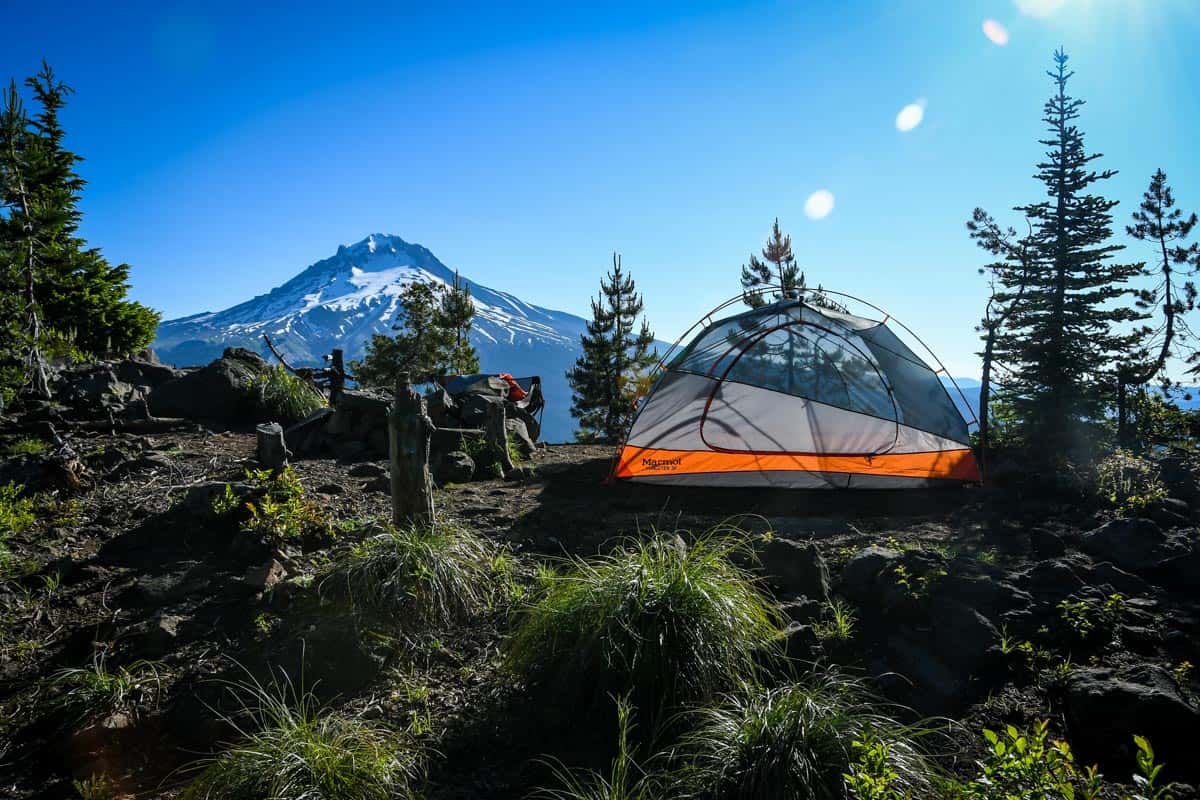
Wild camping is camping for free, usually on public land, outside of developed campgrounds and without amenities or services. Although there are some exceptions, that generally means no electricity hookups, bathhouses, trash service, or camp stores.
Despite “wild” being in the name, you don’t necessarily have to be camping in the remote wilderness to be wild camping. Often, you can find wild camping in national parks or even within city limits! As long as you’re not in a proper campground, it can be considered wild.
While the term “wild camping” is most commonly used outside of North America, it’s essentially the exact same thing as dispersed camping. Some people also refer to it as boondocking, although that term generally applies to RV and van camping.
Benefits of wild camping
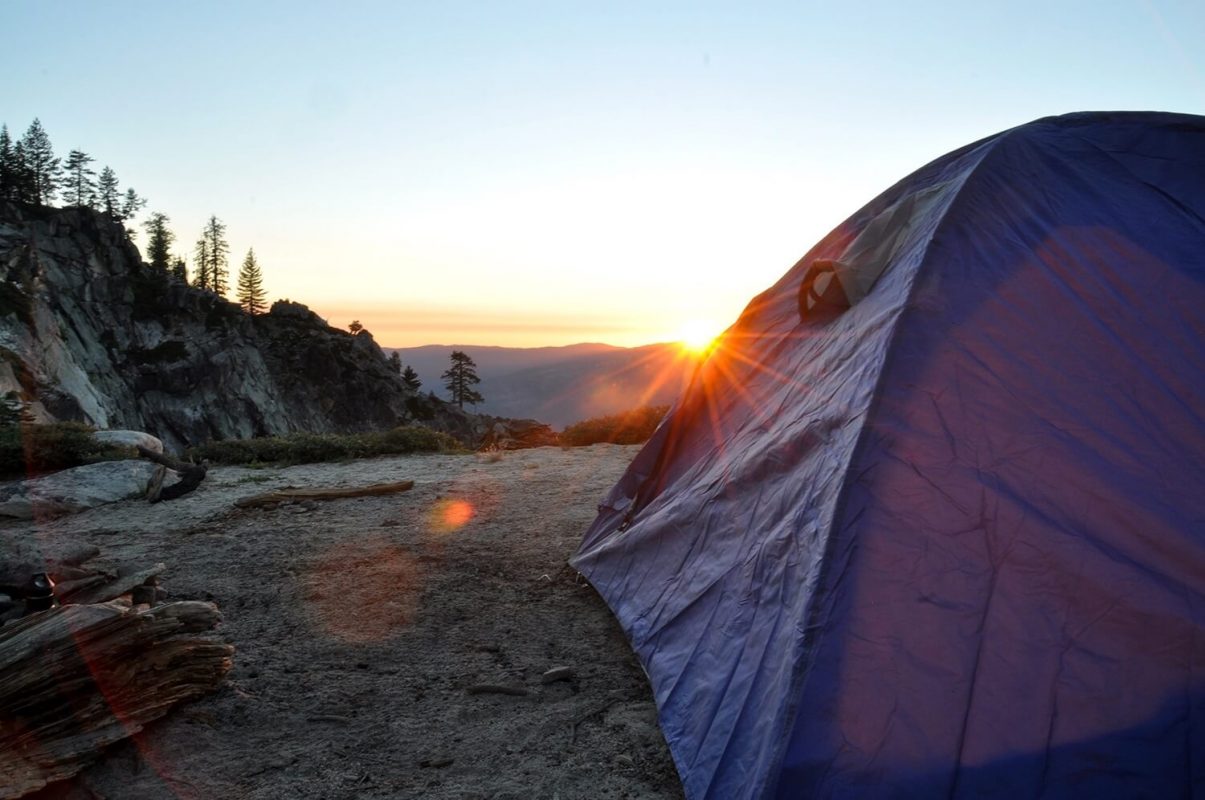
- Saves you money. Wild camping is FREE and for most people, that’s the single biggest benefit. Even many fairly basic campsites have hefty fees these days, which can add up quickly, especially for people who camp frequently or van lifers.
- Minimizes impact on the environment. Everyone getting outside should be following the 7 Leave No Trace Principles, which includes a lot of the basics of eco camping.
- Enjoy epic spots all (or mostly) to yourself. It’s highly unlikely that you’ll run into any sort of crowds while wild camping. Even if other campers set up shop at your first choice, you can simply head down the road a bit further to find something more private.
- No planning required. Without the need for campsite reservations, you can very literally hit the road with no game plan and roll into camp at any given time.
- Forces you to unplug. There’s no denying we’re all busier and more “plugged in” than ever before. For the most part, wild camping is in remote areas with little or no cell service, so embrace it and view this as a great opportunity for a digital detox.
- No campground rules to follow. Aside from fire restrictions, wild camping has few rules. We’re not saying you should blast music through the forest all night, but it is nice to stargaze or sit by the fire without worrying about neighbors or a curfew.
Downside to wild camping
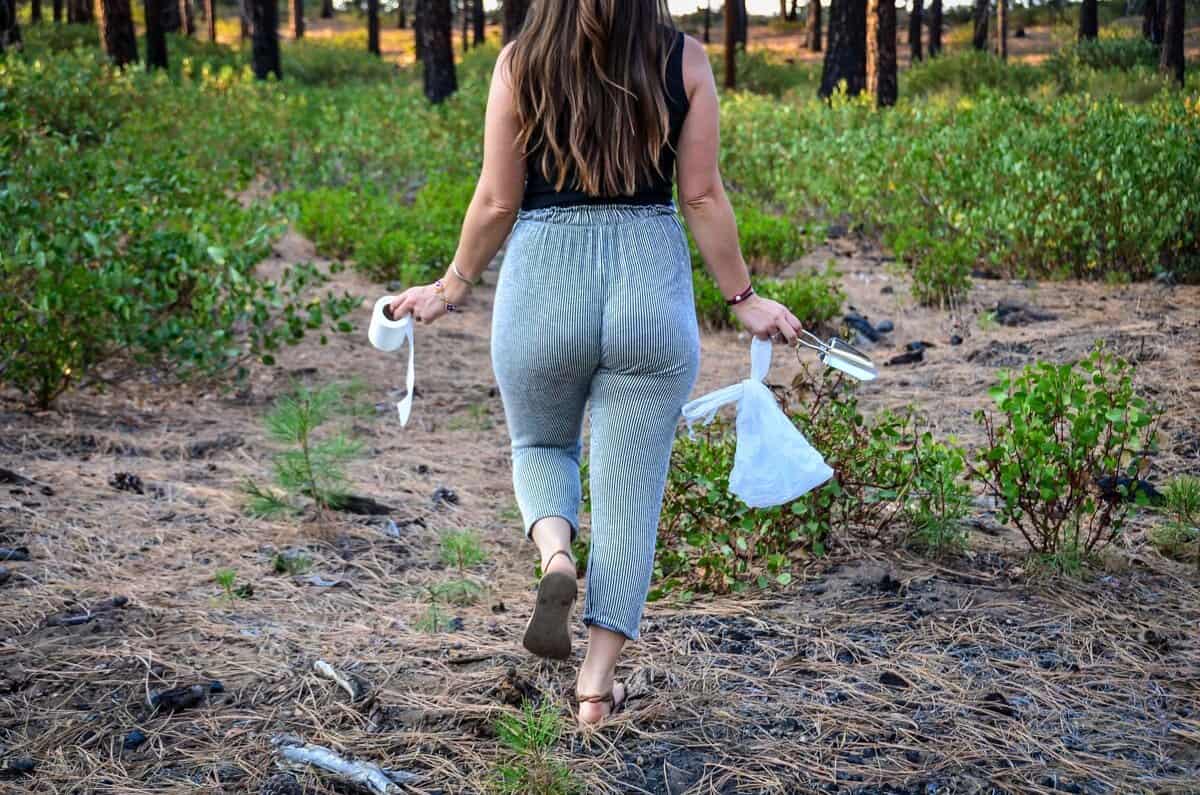
For all its many benefits, wild camping isn’t for everyone and it does have some drawbacks.
- The closest services are often far away. This is a catch-22 because it’s also one of the perks, but remote locations mean while you escape the crowds, the closest necessities and emergency services are farther away than you may be comfortable with.
- (Generally) no services or amenities. No bathrooms, camper hookups, or even running water. You may find wild camping with very rustic amenities, like fire pits, picnic tables, or vault toilets, but don’t count on it.
- Scoring the best spots can be tricky. Wild camping is strictly first-come, first-served, and everyone has the same resources available for researching campsites. That means there’s serious competition for the best ones, so have a few back-ups in mind.
- Seasonal fire restrictions. Depending on where you find a site, having a proper campfire may be out of the question. There are frequent fire bans on public land in the summer and fall, requiring campers to use propane stoves.
Guidelines for wild camping
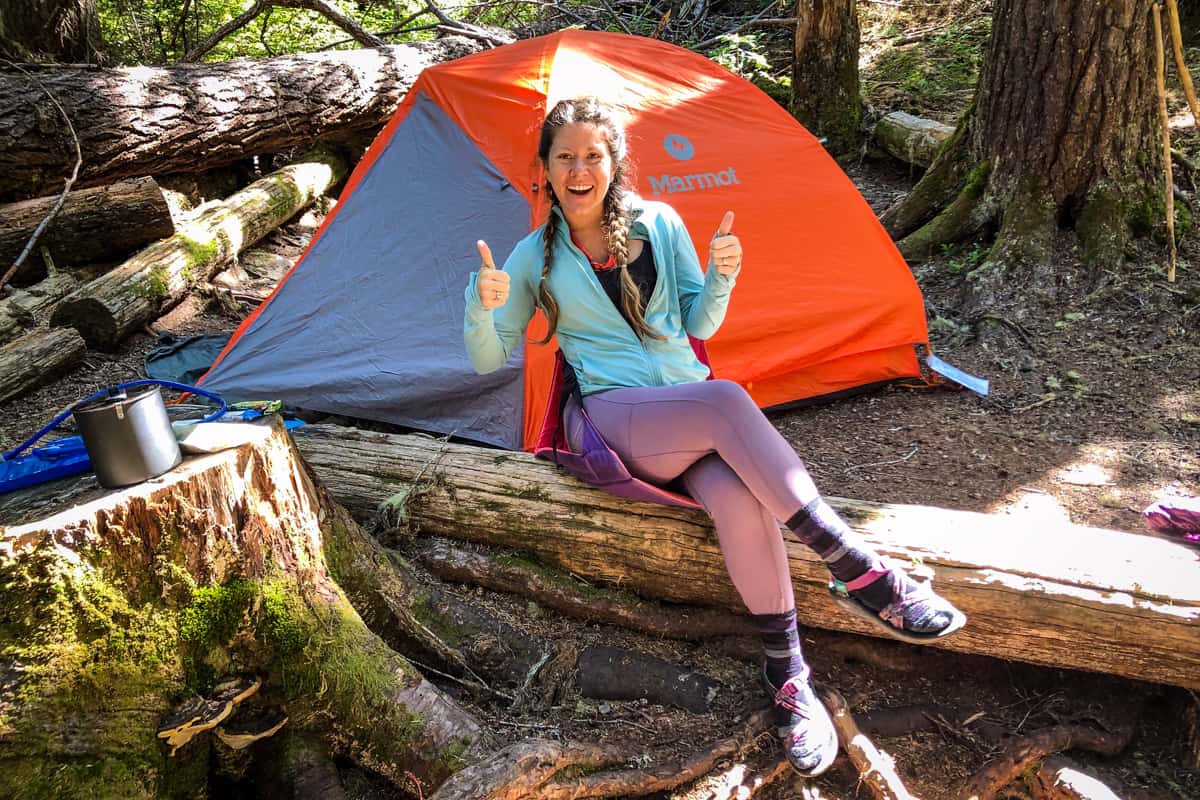
Although wild camping has few official rules, there are several guidelines and best practices you should follow to ensure you have a great experience and stay safe.
The most important is practicing Leave No Trace. If you treat these principles like your camping commandments, you’ll have all the basics covered. Actually, that’s true for any type of outdoor recreation, not just camping!
Essentially, you should plan ahead and prepare for a variety of what-ifs, minimize your impact as much as possible, and leave the area better than you found it. Pack out everything you bring in, but only what you bring in — that goes back to minimizing our impact.
In addition, here are a few guidelines specifically for wild camping.
- Be self-sufficient. Bring everything you need for your trip, from food and water to emergency supplies. Remember, even more “developed” wild camping areas don’t have proper bathrooms or camp stores, and the closest store may be far away.
- Don’t camp too close to a water source. As a general rule, you can’t camp within 100 feet of water regardless of where you’re camping. Keep that in mind when packing, and bring plenty of water for cooking, cleaning, and washing, in addition to drinking.
- Do your homework beforehand. Even some undeveloped campsites charge a small nightly fee or require reservations. Try to find out about this ahead of time and bring small change — there’s an excellent chance it’s cash only and exact change only.
- Get the lay of the land when you arrive. Take a few minutes to find out where your closest neighbors are, whether there’s a pay station or camp host, and if there are any signs posted about fire restrictions or wildlife warnings.
How to find FREE wild campsites
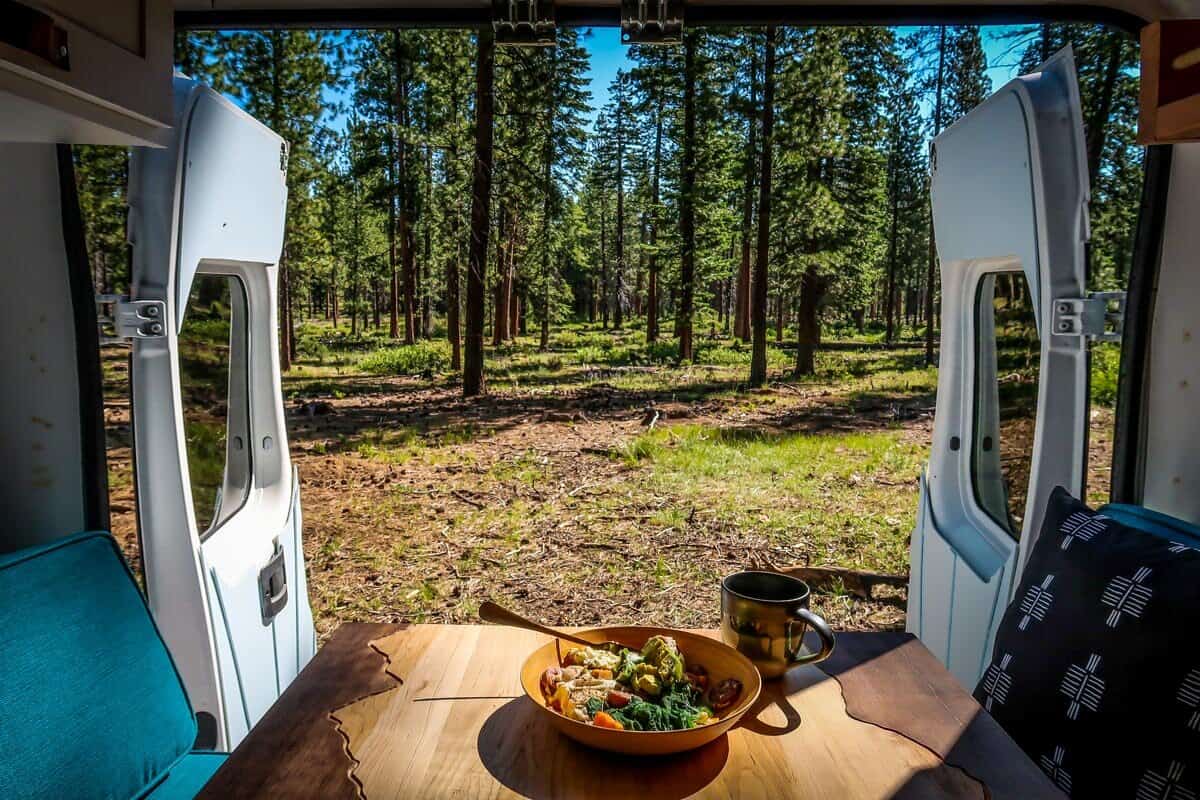
With hundreds of millions of acres of wide-open public land, there’s no shortage of epic places to explore and try wild camping.
It’s not quite as easy as it may sound, though. Trust us, all campsites are not the same! Even absent of any amenities, some wild campsites are incredible and some…aren’t.
Luckily, there are several resources out there to help research the best places for wild camping. Best of all, they’re totally free!
The Dyrt

The Dyrt is our favorite campsite locating app with the largest database of campgrounds (44,000+ campsites and counting!) and over 1 million user-submitted reviews. Plus, it’s super user-friendly, and has some pretty cool features, like outdoor gear contests and forums to connect and seek advice from fellow campers, that you won’t find on any other camping app.
Try their Pro Membership for FREE for 30 days and gain access to the offline version of the app, utilize their trip planning feature AND get exclusive discounts on campsites and gear!
Official BLM website
The biggest physical source of public land in the US, the Bureau of Land Management maintains thousands of campsites and countless acres for wild camping.
BLM’s website has awesome, interactive “recreational opportunity” maps. You can refine your search as much as you want, looking at certain regions, free camping, campsite amenities, and even nearby activities.
Check out our guide to BLM camping to find out more!
USDA Forest Service website
If you know you want to go wild camping specifically within a national forest, this is your best resource. Like the BLM site, this one has feature-rich interactive maps highlighting entire areas, recreation sites, Forest Service roads, and more.
Reddit and social networks
As technology’s reach expands, like-minded communities continue to grow. Search Reddit or Facebook groups that are specific to an area or interest (“Oregon Coast Campers,” for example).
If you don’t find an answer, consider posting your own question. There’s a very good chance someone else out there is wondering where to find wild camping in a certain area!
Best gear for wild camping

Because you need to be 100% self-sufficient when wild camping, there are several very important pieces of gear you should pack.
- Cooler: preferably one with a locking lid to help keep critters out and keep your food cold for longer
- Bear canister(s): if camping in bear country (they’re honestly great for camping and backpacking in general, though!)
- Camp stove: Plus a fire source
- Camping food
- Water jugs: 1 gallon per person, per day is recommended
- Headlamp: There won’t be any lights at night, and you’ll want something for walking around camp or reading in your tent!
- Shovel: Not only will this come in handy for digging cat holes, but you can use it to dead-out your campfire and it may be useful in pitching your tent
- Biodegradable “wet” wipes
- Extra trash bags: to pack out ALL of your waste—human, food, etc–when you are done
Check out our camping essentials list for all the gear you’ll want to bring on your next camping adventure and don’t forget to download our FREE camping food checklist to help make your meal plan and grocery list!
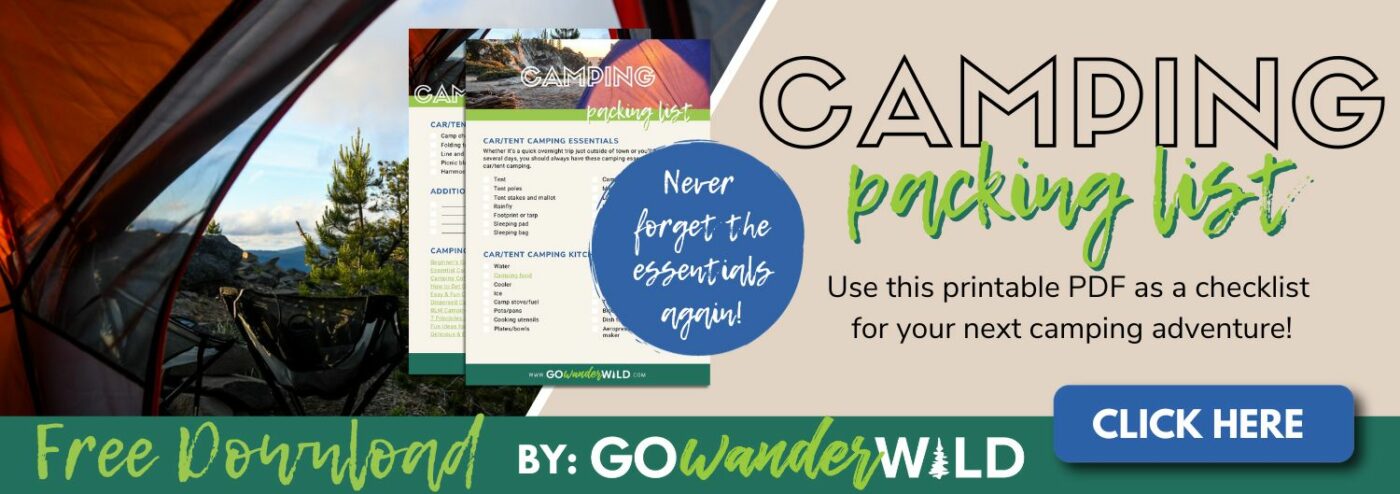

You may also like…
- Best 2-Person Tents for Camping & Backpacking
- Essential Camping Food List + Meal Ideas
- How to Find Discounted & Cheap Camping Gear
- Tips for Eco Camping: Guide for the Environmentally Conscious
Save this article on Pinterest for later!
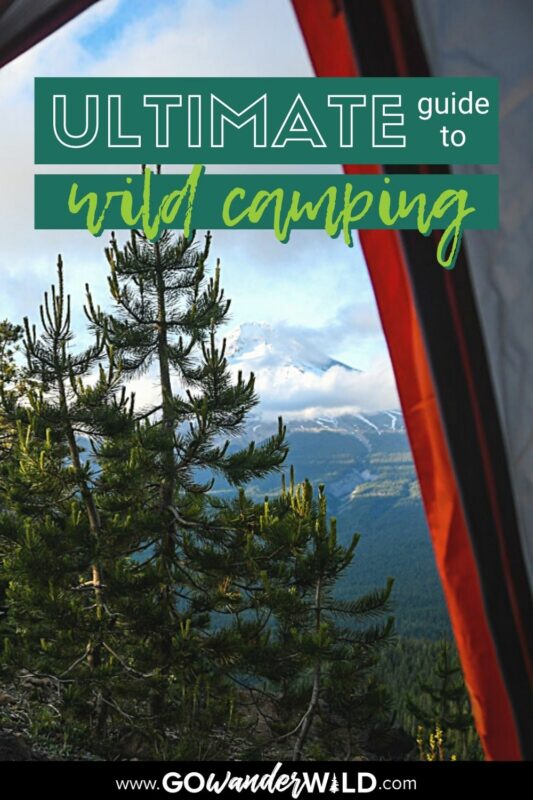
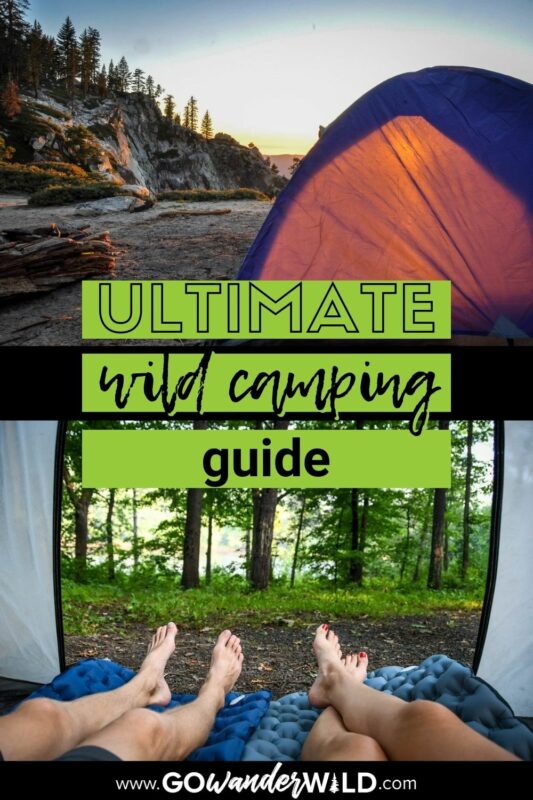
We want to hear from you!
Are you planning on doing some wild camping and have more questions? Leave your comments below and we’ll do our best to find the answers you are looking for!

